Egg Chickens: What You Need to Know
Raising egg chickens is an excellent idea when you have space on your property for them. It’s such a good idea because you’ll have access to fresh eggs whenever you want them. You will quickly discover the difference between fresh eggs straight from the chicken compared to those sold in local stores and supermarkets.
As you know, Mark and I will be starting a new adventure soon, and I’m trying to learn everything I can about raising quail, chickens, and rabbits. We can do this if our city allows us to have them in our backyard. My HOA here will not allow them because our lot size is too small.
They require at least a 10,000 square foot lot in my city and county. Please check your city and county ordinances to see what’s allowed in your area.
Not only can you have fresh eggs to make all kinds of things, including omelets, egg salad, fried eggs, and more, but you can also begin selling eggs. There are plenty of people who’d prefer buying fresh eggs from a farm or local property over buying them at the store any day.
If this sounds like something you’d like to do, there are a few essential things to know before you get started. Taking the proper steps will ensure that you have the most success raising egg chickens on your property.
In case you missed these posts, Meat Rabbits: Tips for Raising Them and Raising Quail: What You Need to Know
You all know our friend, Raymond Dean White, in our comment forum. He is the author of “Bugging In”. I have his book and highly recommend it. Ray was kind enough to share his experience raising chickens with me, and the three pictures in today’s post are from him. Thank you, Ray!
Egg Chickens: What You Need to Know
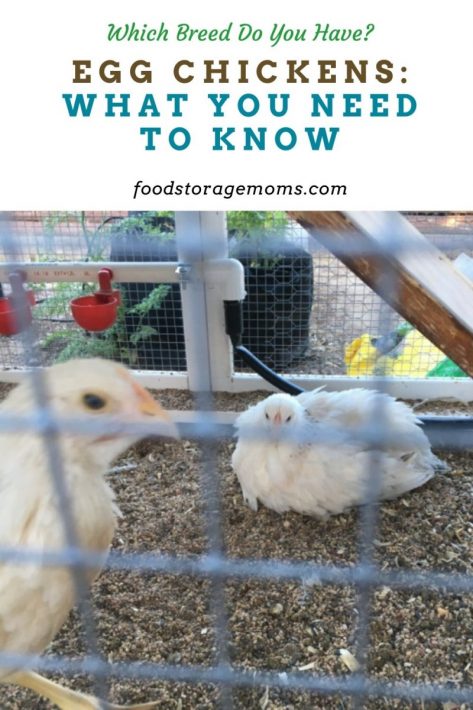
Choose the Right Chickens
It’s not a wise decision to choose just any species of chickens. You’ll want to do your homework before you make your selection. These are a few things to keep in mind:
Choose a Species Known to Lay More Eggs
You may already know that dozens of chicken breeds exist, some of which lay more eggs than others. When you’re raising chickens specifically for their eggs, you’ll want to choose species known for laying 100+ eggs per year because then you can yield more results.
If you have dozens of chickens laying a few eggs per day, it’s going to add up quickly, and that means you’ll have more than enough eggs to use at home and also to sell. In case you missed this post, What You Need to Know About Farm Fresh Eggs
Choose Friendly and Well-tempered Chickens
So, which chickens are best to choose for egg purposes? Rhode Island Reds are highly favored among farmers. These chickens originated in America and can lay dozens of eggs each month.
They don’t have the most challenging temperament to work with, so it’s easy to deal with them living on the land. The chickens in the images today are Ray’s Delaware Chickens.
However, they’re not the only good breed to select when you want chickens for eggs. There are several other good breeds available, including Silkie Chickens, Leghorn Chickens, Delaware Chickens, and Sussex Chickens.
The great thing about these different breeds is that they’re typically friendlier chickens that are easier to manage. Dealing with aggressive chickens is more work and can often leave people feeling frustrated.
Compare Prices and Behavior
The best way to ensure success with your chickens is to choose a breed that lays plenty of eggs and has a good temperament. Be sure to look around for different chickens for sale, compare prices and behaviors, and then make your buying decision.
It may be a challenge to make that initial investment to get these chickens on your property, but once you have them living on the land by your home, and they are properly fed and cared for, you can pretty quickly get a return on the investment.
The number of eggs you can get from these chickens throughout the years will make it all worth the work to find the best chickens to buy and keep.
Keep the Living Conditions Clean
Always keep the living conditions clean for your chickens. You don’t want to have your chickens living in cramped quarters because it makes it difficult for them to move around freely.
Chickens should be able to roam around on the land and enjoy themselves. Be sure to keep the ideal number of chickens in a particular area to give them plenty of room for roaming around and seeking food.
Take care of the bedding by adding more when it gets dirty and covered in chicken poop. Remove the chicken poop as often as possible. You don’t want your chicken living in filthy conditions because that can cause stress for them. If the chickens are living uncomfortably, it can negatively impact egg production, which is the last thing you’re going to want to experience. You also don’t want the chickens to get various diseases from less than clean conditions. Also, cleaning the pens will reduce the number of flies and other insects.
Provide Your Egg Chickens with the Essentials
Make sure you’re providing your chickens with the essentials they’ll need to grow and live healthy lives. For example, it would help if you had plenty of chicken feed available for them, along with some treats, such as fruits and veggies. Chickens enjoy eating fruits and veggies chopped into pieces. While you don’t have to do it all the time, it’s an excellent way to keep these birds well-fed and behaved!
Provide them with Plenty of Food and Water
Along with the food that you’ll provide to the chickens, make sure they always have clean water. If they don’t have enough water to drink, your chickens can end up dehydrated, which can also negatively impact egg production.
Providing care for chickens isn’t too tricky, but you need to stay on top of things. Be sure to check the coop at least twice a day to take care of the bedding, add more feed, and pour more water into the drinking stations.
Provide Clean Bedding and Toys
You can also add toys to the chicken coop and areas where the chickens will walk around. These different toys keep them busy and entertained, giving them something to do when they’re not resting on the bedding or laying eggs for you to use.
When you’re putting in the extra effort to provide comfortable living conditions for your chickens, it makes a difference. Chickens that aren’t stressed or living in poor conditions are more likely to produce a significant number of eggs, which is precisely what you want them to do when you have them on your property!
Get Plenty of Eggs with Your Egg Chickens
Bring the right chickens to your property and care for them while they continue to produce eggs. Once you have the right chickens living on your property, you can get dozens of eggs produced each month.
While you may not need that many eggs for your family, you can do a lot with them, including selling the eggs to others. It’s a great way to make an extra profit each month by selling the extra eggs produced by your chickens to others who’d like to have fresh and flavorful eggs to enjoy.
Ray’s Tips and Tricks
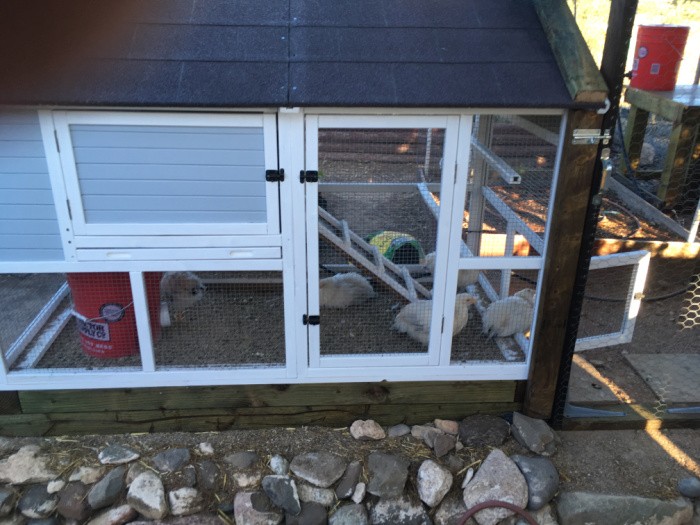
“The photo I sent of the Delaware chicks in the coop shows the small hinged doors. The left-hand one sits above the pull-out poop tray. In the upper right-hand corner of the photo, you can see the orange 5-gallon bucket that is the holding tank for the automatic chicken waterer I built.
A garden hose runs up to it and is reduced down to 1/4” soft copper line that leads to a swamp cooler type float valve that shuts off the flow of water when the bucket is filled. From near the bottom of the bucket a 1/2” irrigation line leads into their coop where I installed a PVC manifold that holds 3 automatic chicken watering cups.
I like those better than the nipples because the nipples can jam open and these cups have worked flawlessly for more than a year now. You can see that manifold and the 3 cups in the last photo. In the lower left-hand side are the Delaware Chicks in the Coop photo, you can see another 5-gallon bucket—my automatic chicken feeder.
I will build a larger, walk-in-style coop if I decide to expand my flock, and especially if I get a rooster so the flock becomes sustainable.
I started my chicks out on Dumor chick starter/grower feed (crumbles as opposed to pellets).
I also added electrolytes to their water (both the feed and the electrolytes were “medicated” to reduce the chance of vulnerable chicks getting diseases).
Then, when they laid their first egg I switched them to Dumor Layer feed w/16% calcium. I never used the grower/finisher feed since that’s for chickens you are raising for meat rather than eggs (I’ll get that if I get a rooster and start growing my flock).
I also feed my birds greens from the garden beds—carrot tops and lettuce are their favorites.
If you move somewhere where there’s grass in your yard, you should build a chicken tractor and your chickens will happily munch on grass and any bugs in the grass.
Oh, when they were little a couple of them did get pasty butt, (easily treated by cleaning the dried poop off their vent and adding probiotics to their water supply along with the electrolytes). We didn’t lose a single chicken.
No matter what size coop you end up building I definitely recommend putting a layer of 1/4” or 1/2” hardware cloth wire under it to prevent burrowing animals from causing you any problems. It’s also the best material to use for sidewalls in the open areas of the coop.
My little coop has a sliding door on the roost and egg-laying level that I close down at night in the winter (when they’ve gone “upstairs” for the evening).
The rest of the year it remains open for ventilation. There is also a small opening in the egg access door that can be shut in wintertime, but left open for cross ventilation.
I recommend you join the site Backyard Chickens as it is an encyclopedia of information on breeds, feed, diseases, coops, pests, and anything else you want to know about chickens. www.backyardchickens.com
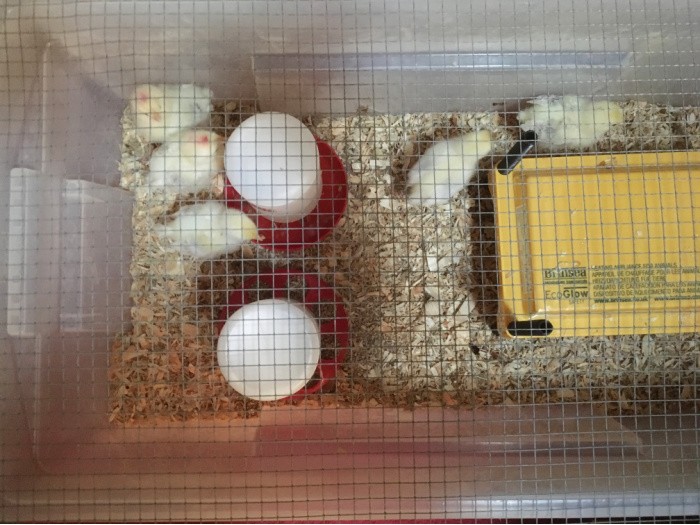
One more note: I never used a heat lamp to keep my chicks warm, though many do. I used that Brinsea Ecoglow 600 brooder to keep them warm. I like that the height is adjustable so as they grow you can raise it up, and its gentle heat isn’t a fire danger like the heat lamps can be.” Here’s a link: Brinsea Products Ecoglow
Here are pictures from our friend, Matt
I love getting pictures from friends that I can share so we can all learn together the tips and tricks of raising chickens. The first one Matt uses to pull the tractor around so his chickens have fresh grass and so he can mow his lawn a lot easier.
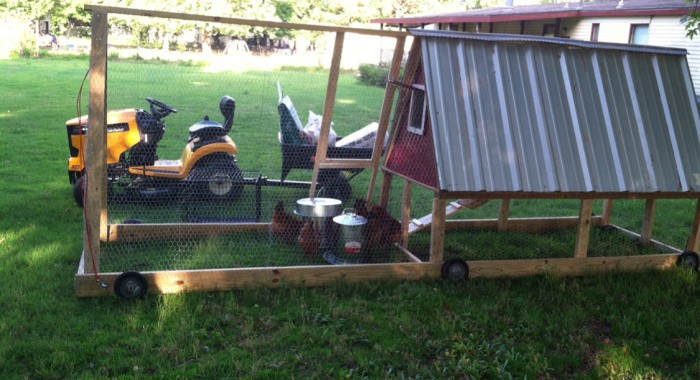
The picture below has a side open for easy cleaning.
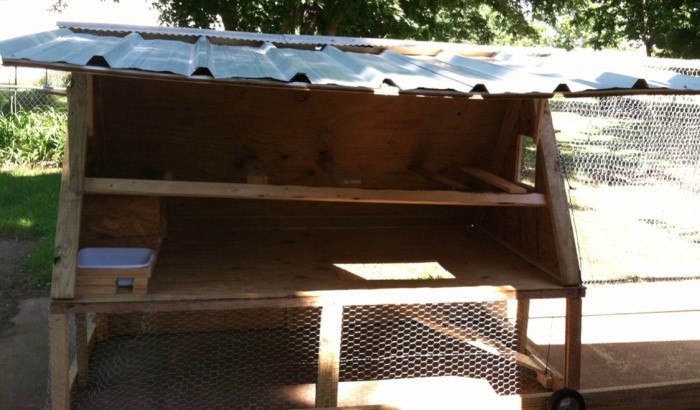
This is the front of the chicken coop and the rear opens for egg collecting. Can you see what I see in this picture? Oh my gosh, I saw it and got the giggles. It’s a Corn snake. Thank you for letting me use these, Matt!
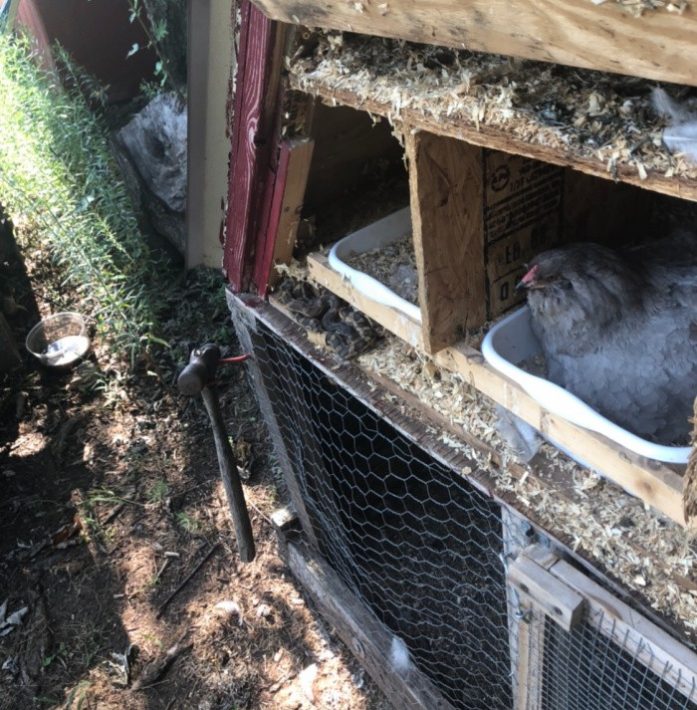
Final Word
When you want chickens that lay plenty of eggs, choosing the right breed is essential. However, it’s just as necessary to provide the best living conditions possible. Take good care of these birds, making sure they have plenty of bedding, some fun toys to play with, and plenty of food.
You’ll also need to give the chickens lots of water to drink throughout the day. If you’re taking good care of them, you can expect them to behave well and lay lots of eggs over the years! If you have some personal experience raising your own chickens for egg production please share your ideas, challenges overcome, and success stories, my readers will love it. May God Bless this world, Linda

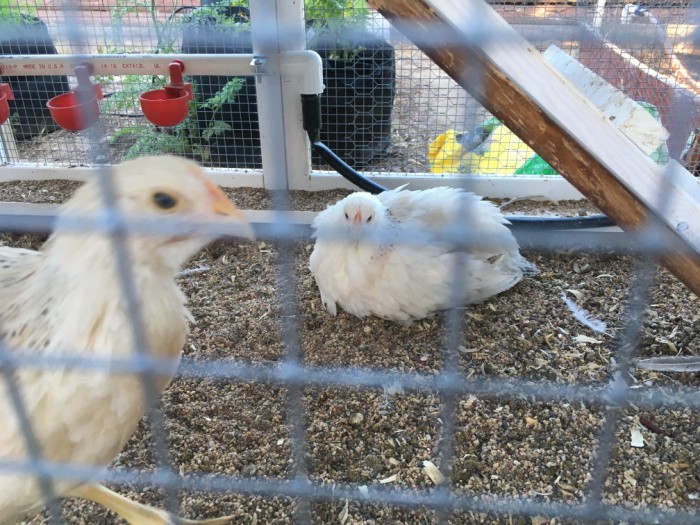

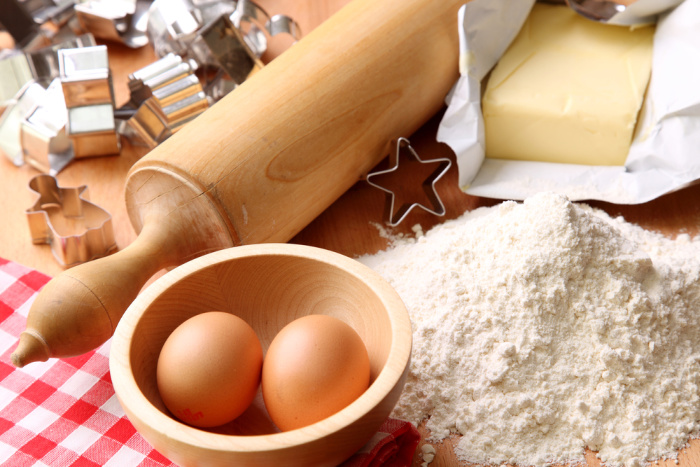
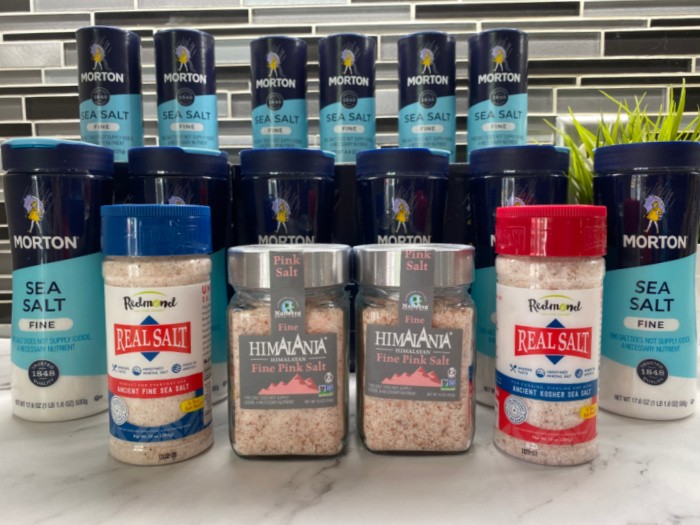

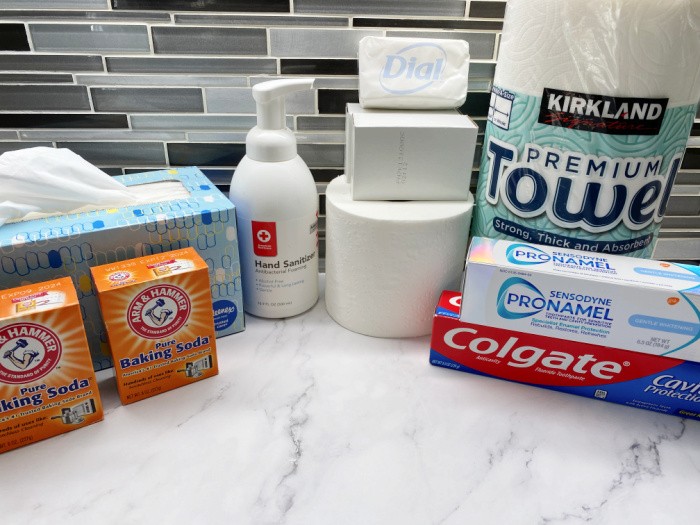
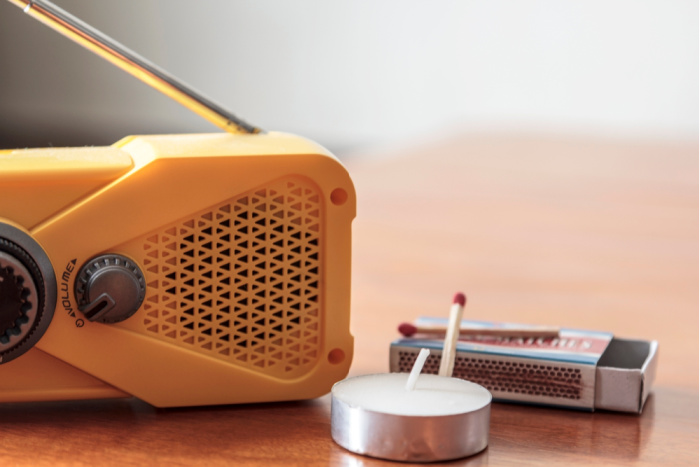














Chickens as part of a survival plan having them free range might not be the best idea. The problem with chickens is they taste like chicken. Everything eats chicken including chickens.
Look hard at your area and plan. A dog will kill them all in a spree. Bears will rip a coop apart. Skunks will be drawn to the water tray if there’s a light under it because they associate the light with junebugs around here.
I opted for a chicken tractor that I pull around the yard to different spots.
A big no no is heat lamps in the winter in smaller coops. There are exceptions in which I put one and that is single digits with high winds. It’s very easy to overheat your chickens in the winter. Just keep the wind off them and they usually do good. Always leave ventilation so moisture doesn’t build up inside the coop which can cause issues in the winter and open it up as much as possible in the summer.
Remember that chickens need protein including meat. I feed mine scraps of everything but chicken because I don’t want to encourage cannibalism.
I’ve seen chickens eat mice and small snakes by swallowing them whole.
They really are easy to raise and can even be very friendly. Hand washing is a must and remember they aren’t pets though the kids might pet them salmonella can be passed on.
Backyard chickens is a great forum with local/state groups of very knowledgeable people.
Enjoy the raising of chickens it’s not very hard with knowledge and a little up front work.
Hi Matt, wow, great comment! You mentioned things I hadn’t thought about. I always learn so much from you!! I remember seeing that chicken tractor you have. If you have a minute please resend the picture and I will put it in the post. This has been my goal for years and we’re finally going to do it. I feel strongly about needing to grow more of our food and raising our own meat by way of quail, chickens, and rabbits. I hope we inspire others to do the same. Thanks again, Linda
Matt is the man. All so true. Things they don’t tell you: You will worry all the time about your chickens, you will spend tons of time making sure they don’t get killed or hurt themselves. You’ll spend tons of time doing whatever they want 🙂 giving them whatever feed they prefer. Mine go bonkers for black oil sunflower seeds and sprouted lentils but don’t give them too many snacks every day. They also love young wild oat grass or even wheat grass. Mine would rather their own crushed up dried shells than their oyster but they get a fair amount of calcium in their feed. They love mash. Oh my goodness do they like mushy food. I use three types of gravity fed waters (non nipple type). My chickens are not free range because we have bobcats, coyotes, hawks and the occasional mountain lion. But they have a ginormous run. It’s fort Knox but I still go out there many times a day, especially now where it’s 100 F. I cool them down with a fine mist from the hose which they appreciate. I have white drop cloths as a roof over the run right now which I keep damp in the hot times of the day. Chickens lay an egg once a day. That’s a lot of eggs. I have four ladies right now raised from pullets and they give me 120 eggs a month. Occasionally one of my girls skips a day. Things to look out for: bumblefoot, egg binding. There’s just so much to learn about raising chickens. Backyard chickens.com got me through three issues when I first started. My parents and grandparents always had chickens but when they are your own you worry a lot lol. And you love them too much. Oh, I use the finer shavings now that they’re older (don’t use with young chickens) and use a cat litter scoop to soft poop every day. Super easy. Their dust bath area also has sand, wood ash, dirt but no Diatomaceous earth. Oh and Matt made a great point about overheating in winter, they give off a lot of heat and moisture. Just keep the direct wind off of them but still give them circulation especially at the top of the coop. Having chooks is rewarding but don’t say I didn’t warn you when you find yourself talking to them and jumping through hoops just to make them happy. 🙂
Thx for the compliment. I’m misting mine twice a day right now too.
Eggs come on about a 26-28 hr cycle. So day skips and times laying will change. Two of mine aren’t laying in this heat. I’m ok with that because it’s a long run game.
Yeah I’m using the finer shavings in the coop too. It’s real easy to hoe out. Bucket it up and make that poo soup for the garden.
I’ve lost about one a year to what I believe is West Nile virus from mosquitoes.
Sounds like your a good resource to tap into as well for knowledge
I knew about the cycle being longer than an actual day but they seem to be laying at the same time. Which is odd. Except for my one girl. She skips once a month. So strange. They are 13 months old now and my husband asked if we were going to eat them when they stopped laying. I told him if he laid one hand on my girls I’m going to feed HIM to the chickens. 🙂
I did not know that about the poo soup, same as “tea”?? I just looked into it now that you mentioned it. I’m amazed how much poop a chicken can produce. Lol
Yeah same as tea. Just keeps it from burning the plants. I put it directly on during the winter and mix it in my soil.
I don’t normally butcher and eat my girls because they’ve served their purpose and I usually let them live out their lives. If your gonna use them to butcher you need many more because chicken math
Come bad days I might have to change that.
I could not eat my girls and not interested in raising meat chickens. Yes, I’d definitely need more if I did. We get so many eggs, it’s just two of us here. I traded eggs the other day for lemons and figs and for 300 bricks with someone else 🙂
Hi Marianne, what a blessing. I love trading for things it helps all of us. LOVE IT! Linda
Hi Marianne, oh my gosh I LOVE LOVE LOVE your comment! I have wanted to raise chickens for years. Everyone is helping with ideas which will make it easier for anyone like me to get started. Thank you, thank you!! Linda
You are going to LOVE yours! I have golden comets and they’re spoiled rotten. I can sit on a chair in the run (the run is 15’wx17’lx6’h) and they lay down around my feet and fall asleep) So cute! They also “help” when I walk around with the poop bucket, scooping up the mess. By help I mean not helping, “stop eating poop!!” Okay, I sound like a crazy person. But you’ll see! Lol
Hi Marianne, I’m so excited to hear this, I love stuff like this! We will be raising meat chickens as well of course in different areas. We have a large family so this will be a family affair! I got the giggles over “stop eating the poop”!! Love it! Linda
Linda, great post as usual. I’ve learned so much from you and Matt. You are both so intelligent. You’re both so awesome to share your knowledge with us. Thank you both.
Hi Deborah, thank you my friend! I need all the help I can get when I start my new adventure. It helps to have friends walk us through this new adventure. Linda
Linda,
Thanks for the kinds words and for promoting my book. I hope your readers find it useful.
One thing I forgot to mention is that it’s important to keep from overcrowding your flock. Three to five square feet per bird is the general rule of thumb, but more is better. Overcrowding leads to stress and that leads to aggression. One bird–the lowest in the pecking order–can be singled out and literally pecked to death. My six Delaware chicks were raised together and that’s why they got along so well, when they were put in a coop that would really have been better for four hens their size. They are fairly large hens. My coop would have worked quite nicely for six bantams, but I got six Delaware chicks because they are excellent egg layers, have gently dispositions and my wife and I liked their looks. My coop totals 30 sq ft., but is attached to a much larger enclosed run.
After a few months in our slightly overcrowded coop my birds started pecking on one hen. I got a bottle of Dr. Naylor’s Blue Kote and sprayed the pecked area and that solved the problem. No more pecking.
My six hens provide us with far more eggs than we can eat, so I give some to my neighbors.
To keep my automatic waterer from freezing in our very mild winters I ran heat tape around the orange 5-gallon bucket (the reservoir). It kept the line ice free, though the watering cups did get a thin layer of ice in them, but the chickens could and did peck right through that.
Matt’s chicken tractor is excellent! And I’m surprised that little corn snake hasn’t been eaten.
Ditto to everything Matt and Marianne said!
We built our coop on the chassis of an old farm wagon, so it can be moved if we want them out in the fields. The bonus is that with a good space underneath (similar to the photo in the article) their space is doubled, and they have shade in summer. I have a bunch of old storm windows and doors–glass–that I lean up against the sides in winter, so they have a “solarium” protected from snow and wind, and dry soil they can still “dust” in. Another big advantage to a raised coop (whether on legs or wheels) is that you won’t have rodents tunneling under the floor.
If you have a larger coop, you may want to try deep-litter bedding, especially in winter (I agree, with a tiny coop you probably need frequent cleaning). Instead of daily cleaning, more clean bedding is added as needed. The increased depth adds insulation, and the chickens happily scratch their way around in it, keeping it aerated. If it *does* smell, that means it needs more clean bedding; if it gets a stiff “crust” on it, there are probably too many chickens in a small space–but you can cope if you fork through it and loosen it up (and add more bedding). I generally clean completely twice a year, spring and fall.
I thoroughly dry and bag up some lawn clippings (untreated of course!) for winter. They are short, so unlike hay it won’t get tangled up in the hens’ crops–but it gives them a treat, they really love it; it adds to the bedding as well, and smells wonderful. Some dry leaves, bagged up for additional bedding, are another good idea–toss a few handfuls in and watch the hens scratch around in them! They’ll be shredded in no time. Saves on shavings! (If you have access to sawdust, say from someone’s firewood or woodworking, that saves too–just be sure there’s no treated wood.)
Breeds… I rotate the breeds of chicks I get each year, making it easy to identify how old a given hen is. Buff Orpingtons and Black Austrolorps are my favorites, generally the most mellow as well as being cold-hardy; also good broody instinct, which can be blessing or curse, depending on what you need! Close second would be the Barred Rocks. RI and NH Reds seemed to be a little more excitable. Ameraucanas were fun for their green or blue eggs, but not as good layers. Also had Amber Links (one of whom laid an egg/day for at least 21 days!); another similar cross this year, but they aren’t laying yet so no opinion. The breeds mentioned are cold-hardy, fairly heat-tolerant, and being dual-purpose can also be used for meat–they just won’t grow as fast or as big as the Cornish meat crosses.
I also got a brooder plate this year–only used it for a day until I could sneak the chicks under a broody hen after dark, but they did seem to love it. Besides the greater safety (compared to a heat lamp) I’ve understood that chicks raised with a brooder plate tend to be less excitable.
This is my first year raising chickens. I have a small flock since I live in town. I have an enclosed run for them due to neighboring cats, dogs, and the occasional coyote or raccoon. On hot days I give them a bowl of frozen corn with a bit of ice water, or ice cold watermelon slices. They love kitchen veggie scraps and pulled weeds from the garden. But, I’m not sure what you mean by “toys”. I was wondering what kind of toys you put in the run for them. I want to make sure that they are happy and entertained since they don’t get to be free range.
Hi Becky, I have a friend that told me about chicken toys. She wrote about them. https://www.imperfectlyhappy.com/20-chicken-toys-you-can-buy-or-diy/